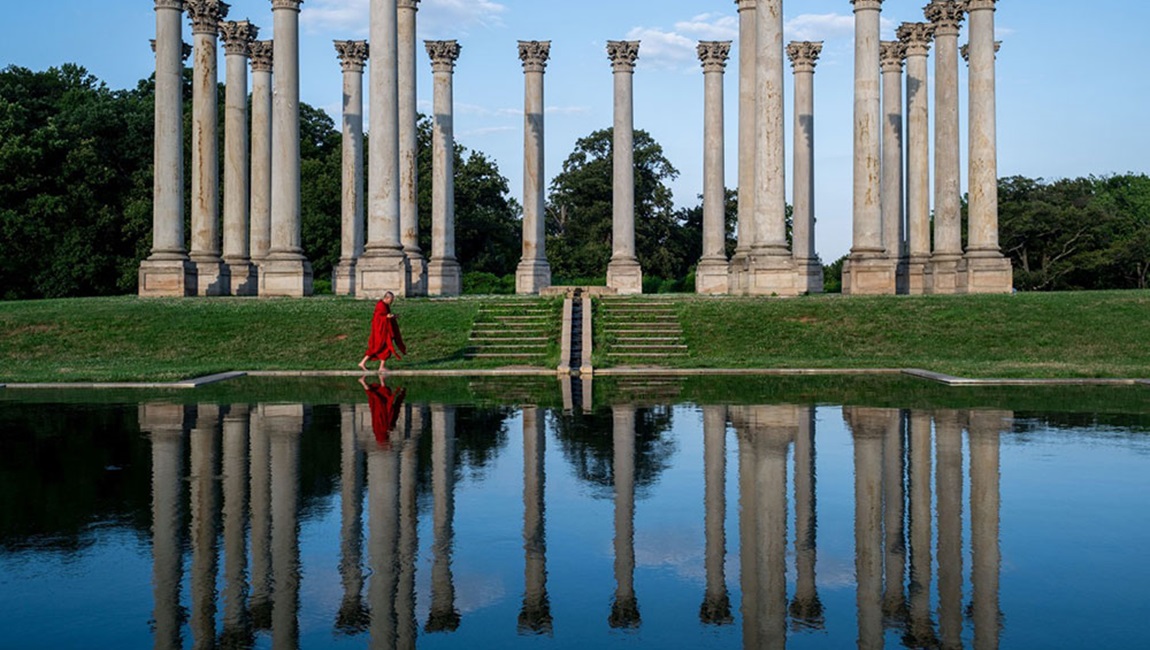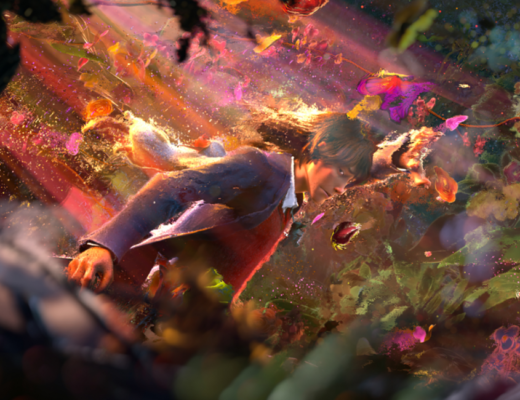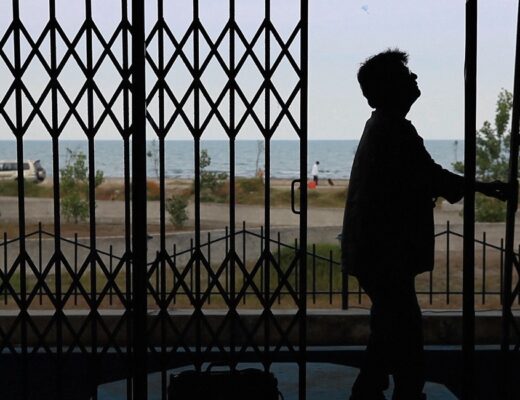Longtime Tsai fans might recall that he officially retired from making feature films back in 2013. He must’ve been in some kind of a mood, because the intervening decade has proven to be remarkably productive. Beginning in 2011, originally as a commission for a commercial, Tsai’s Walker series now spans 10 films in total; as with every Tsai project, each features Lee Kang-Sheng, here a silent monk draped in a striking red robe as he slowly traverses various spaces from around the world. Although all 10 films are similar in this particular regard, they otherwise vary in striking ways. Several of them are 20–30 minutes long, but others are, at roughly 80 minutes, feature-length. Lee is the only actor to appear in some of them, while others feature additional cast; Abiding Nowhere is the second of the Walker films to feature Anong Houngheuangsy (who also appeared in last year’s Where and 2020’s Days) alongside Lee. In fact, each of the longer Walker films deal with a specific kind of physical duality; 2014’s Journey to the West features Denis Lavant; 2015’s No No Sleep co-stars Masanobu Ando; 2021’s Wandering, perhaps the most self-reflexive of the series, features Tsai himself as a spectator alongside actress Ivy Yin as they view clips of the previous films projected on the walls of an art gallery. Interiors vs exteriors; urban spaces vs natural ones; slowness vs speed — Tsai is unpacking an entire philosophy of life and image-making in this series, disregarding the rules of traditional narrative filmmaking to instead make sketches imbued with a deceptive simplicity.
Abiding Nowhere begins with Lee’s monk slowly, ever so slowly, walking through woods. He steps over branches, passes a stream, and is generally unhurried. Eventually, he reaches what reveals itself to be Washington, D.C. What follows is a series of vignettes of Lee traveling down streets, across large, empty courtyards, and past historical markers like the Washington Monument and Union Station. There is also a trip to the Smithsonian (the film was produced by the museum) and a healthy smattering of bemused onlookers no doubt confused at the bizarre ritual being captured by Tsai’s camera. Long one of our most physically gifted performers, Lee’s movements seem monumental, especially when juxtaposed against the hustle and bustle of the everyday movement we all take for granted. Face pointed downward, shoulders perpetually hunched, Lee’s body suggests nothing so much as intense, unending effort. Each step seems to take an eternity — at one point, a clearly handicapped man with a pronounced limp walks the same path as Lee at roughly twice the speed. Concurrently, Tsai rhymes the movements of Lee with that of Houngheuangsy. The young man sits alone in what appears to be an apartment, prepares himself noodles, and eventually visits the same museum as our monk. Tsai comes tantalizingly close to creating a narrative here, slowly cross-cutting between the two men as they perform their methodical activities. But the film ends abruptly, never actually coalescing the two strands. Inference and oblique suggestion is all we get, but it’s enough to suggest a whole universe of possibilities. Tsai understands that both the mystical and the quotidian are always all around us. When asked in an interview about why he chooses to make films about walking so slowly, the directed replied with a simple answer: “So that you can see more clearly.”







